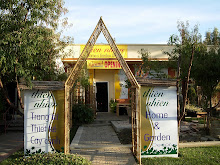Dear Customer:
Your shipment of
STORAGE OF BULBS BEFORE PLANTING
· Directly upon arrival and prior to planting, store your bulbs in an outside air ventilated room at (60-70 degrees F) or (17-20 degrees C)
· Storing unplanted Hyacinth, Tete a Tete & Daffodil bulbs at lower temperature will increase the risk of mold, mildew, botrytis and penicillum.
· If you receive your shipment of bulbs in card board boxes, open the boxes immediately for more ventilation.
POTTING SOIL
Plant bulbs in a well drained growing mix. The growing mix should be as follows:
q P.H. level between 5.5 – 6.5
q Low in soluable salts
q Should be moist not wet at planting time
q Leave enough room in pot to water them during the greenhouse forcing phase.
q Growing mix should contain the following:
o 20% clean top soil or sand * (VERY IMPORTANT TO AVOID BOTRYTIS) 60% peatmoss
o 20% Styrofoam or vermiculite for added drainage and to increase oxygen in the pot for better aeration on your tulip roots.
q The growing mix can greatly influence the quality of your tulip crop. A ph of 5.5 to 6.5 versus a ph of 6.5 to 7.0 will lessen the amount of roots in your pot (this is good) and will also fight of more bacteria for healthier roots. Should your ph be at the level of 7.0 bring it down to a less neutral level. The sand in your mix will naturally fight off bacteria and will increase the drainage and oxygen levels around the tulip roots; which is desirable.

Providing water when planting:
Do not over water after planting and then placing the pots in the cooler. You should self test the moisture level in your growing mix. The procedure is as follows: Take a hand full of growing mix and place it in the palm of your hand. Squeeze as hard as you can and if there is excessive water dropping out, your mix is too wet. You should get a couple drops of water out of the mix, and no more. Adjust your moisture level in the mix accordingly, because too much water will cause a shortage of oxygen leading to a weakening root system, and thus increasing the risk and susceptibility of Pythium. Rooting can then proceed quickly and satisfactorily.
CULTURAL INFORMATION FOR LATE TULIP FORCING (EASTER April 12, 2009)
This is an important section stating the facts for increasing the quality on your TULIP bulb crop for the next growing season.
There is increase concern on tulip ROOT diseases. The disease in particular that we are referring to is called Botrytis Cinerea or more commonly referred to as “GREY MOLD”. This does not affect hyacinths or daffodils.
WHAT IS GREY MOLD? EXISTS ONLY ON TULIP ROOTS
Grey Mold or Botrytis Cinerea is a BACTERIAL root infected disease. This disease will start to grow if conditions are favorable. The favorable conditions are:
1. When too many roots are in the bottom of the pot.
2. Wrong growing medium is used
3. Long extended rooting time at 48 degrees
SYMPTOMS:
· Grey mold can be seen in the cooler during the winter months already.
· Grey puffy or fuzzy mold growing from drainage holes
· Slimy, glazy roots in the bottom of the pot.
CAUSED BY:
The primary cause for this disease is the dying back or the decomposing of root mass in the bottom of the growing pot. The roots decompose because of:
1. Lack of oxygen around the roots
2. Too many roots in the bottom of the pot (layer upon layer of roots)
WHAT TO DO TO AVOID GREY MOLD:
1. Always use new pots
2. Use the proper growing mix as described above
3. Root tulips until they just hit the bottom of the pot
4. Follow temperature schedule included in your shipment
Bulb fully yours,

No comments:
Post a Comment